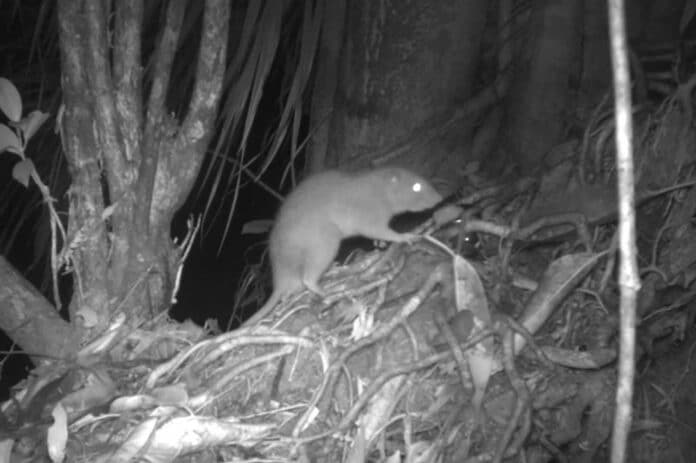Huge arboreal rodents, the Vangunu gigantic rat (Uromys Vika), are called vikas locally. It was found on the Solomon Islands’ island of Vangunu and was first reported in 2017. Because its main lowland forest habitat has been cleared for logging, it is classified as Critically Endangered.
For the first time, scientists from the University of Melbourne, the Solomon Islands National University, and Zaira Village, Vangunu, have captured images of this rare, giant coconut-cracking rat. It is incredibly positive news for this poorly known species.
The primary forests of Zaira, especially the Dokoso tribal area, are home to the Vangunu colossal rat, which is believed to be its only surviving habitat, according to the images. The Zaira forest has been permitted to log, and if this goes through, the Vangunu huge rat will surely go extinct.
The uncommon giant rat lives in trees, is at least twice as large as a typical rat, and can chew on coconuts with its teeth.
Dr Tyrone Lavery from the School of Biosciences at the University of Melbourne said, “Deep traditional ecological knowledge of the U. vika is held by Vangunu’s people, and drawing on this was a vital part of the project’s success.”
“For decades, anthropologists and mammalogists alike were aware of this knowledge, but periodic efforts to scientifically identify and document this species were fruitless.”
Senior author Mr. Kevin Sese from the Solomon Islands National University, said: “Field work was guided by the Vangunu people’s knowledge of U. vika, and using camera traps, the authors were able to capture 95 images of what was determined to be four different individuals in their forest habitat.”
Mr Sese said, “The community at Zaira was adamant the species lived in their forests. However, the presence of U. vika had never been scientifically documented there. Confirming its persistence was considered a vital part of conservation efforts for Vangunu.”
Dr Lavery said, “We thank the community of Zaira for their unwavering commitment to conserve their forests and reefs in the face of continuous attempts to undermine this commitment and for their support of this research.”
“We hope that these images of U. vika will support efforts to prevent the extinction of this threatened species and help improve its conservation status.”
